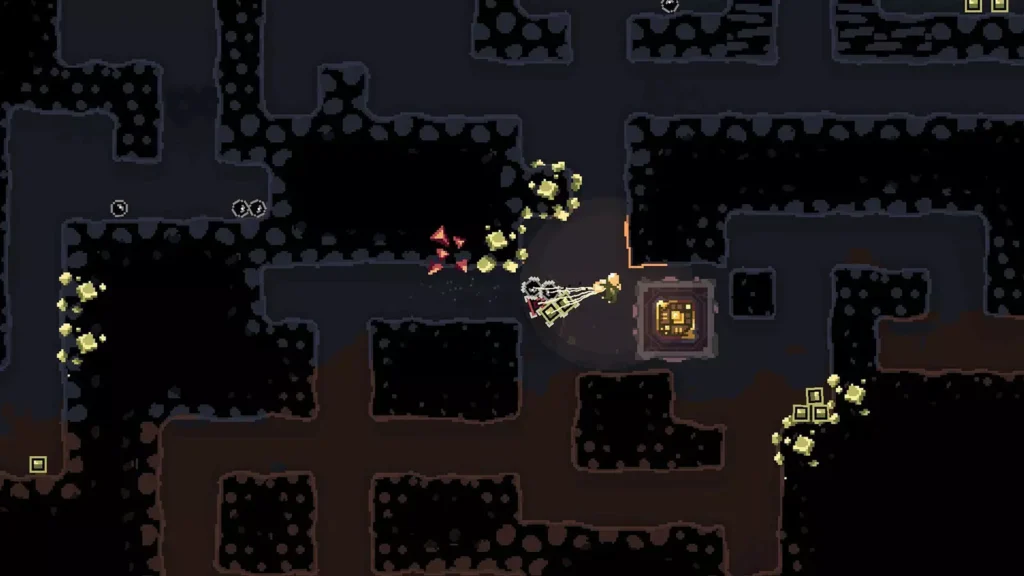Heya friendos! I’ve officially started collaborating with someone on a new game… or maybe even a couple of games. From this point forth, these newsletters will chronicle the story, nay, the legend of Project BuildyCrafty. But what is it? How did we get there? Let’s get into it!
How Am I Doing?
I’m buzzing with excitement! As I stated in my last newsletter, I was out and about in the Champagne region, visiting friends. Apart from having a great time, we brainstormed what must’ve been a hundred game ideas. We managed to narrow it down to 5 ideas we’re really excited about. They’ve been occupying my every waking thought since.
What Am I Doing?
I’ve alluded to Project BuildyCrafty last week as well, but let’s dive a little deeper into its history and what exactly we set out to do. I met Jonas in France through an ex-colleague, now friend, a couple of years ago. Back then, Jonas was working on Surmount, a cute but challenging physics-based climbing game. It has since launched (hurray!), and after that, he pondered what to do next.
Interestingly, he worked on Surmount together with another Dutch guy called Jasper. I don’t know him personally, but from his work, I sense that we share similar design sensibilities, as well as expertise in graphics programming! Also, his games look super fun, so check them out!
Anyway, Jonas and I mentioned designing games together offhand, here and there. The thing with game developers is that you say that kind of stuff all the time. It’s almost like a social contract: you get together, talk about games, and end with “We should make something together!” But with Jonas, it kept coming up, and we started chatting about it more frequently. At some point, back in January (2025), we scheduled a call to discuss how serious we were about the idea. We talked about our vision for commercially viable games with short development times.
We both read articles and saw interviews from Chris Zuwoski of How to Market a Game. He speaks a lot about sticking to a group of genres that do very well on Steam right now. This category, affably called CraftyBuildyStrategySimulation games, ranges from deck builders all the way to city managers. Personally, I think it doesn’t really matter what genre of game it is, as long as it has a tight gameplay loop, replay value, and some sort of player expression, be it through strategic choices or creative freedom.

The Mission
Thus, Project BuildyCrafty was born. Jonas and I talked about games in that category that we personally enjoyed to take inspiration from and additionally did some marketing research. But first, let’s break down exactly what we set out to do with this project.
This is the mission statement:
- Earn €30.000.
- Have fun making a CraftyBuildyStrategySimulation game.
- Make a game in 3 months (but probably 6).
- (Optionally) Try out systemic/reactive design.
So what’s that all about? The €30.000 mark is from an undisclosed anecdote. It’s also quite a realistic amount if we keep development lean and mean. We don’t want to overshoot the moon here, it’s best to keep expectations managable, while mitigating risk.
As for the second point, we’re already having a lot of fun making a game in one of those genres, and we barely even started! It may seem silly to put that on the mission like that, but I think it’s super important to refer back to it every so often to remind yourself that having fun is a priority. If you make decisions that sap the joy out of the creative process, something went awry.
The 3-month deadline is really helping us make decisions about the scope of the game. We estimated most of the ideas we considered to be between 6 and 12 months of development time. That led to some trimming here and there. I believe 3 months is a bit tight, especially if we try to do everything ourselves, so it’s good we leave an additional 3 months’ margin.
The last point was to explore systemic and reactive game design because those are concepts we’re both interested in trying. In the end, the concepts we came up with don’t lean very heavily on it, so I suppose it’s good we left it as an optional directive.
Why Am I Doing? (this)
I’ve been making experimental games for a really long time. I love the process of it, but there are two major problems with them. One, I never manage to get myself over the finish line. Two, there’s no guarantee that you make any revenue off of it. Collaborating with someone will solve the first problem: there’s a mutual responsibility and accountability to get things done. Additionally, you keep each other hyped enough to keep the creativity flowing.
Making any money off of games is still a gamble, of course. It’s just not the most reliable industry for that. That being said, we’re taking a relatively methodical approach to the marketability of the project, hopefully maximizing the chance of hitting our financial goal.
Next week, we’ll dive into what exactly that methodical approach is. Stay tuned!
